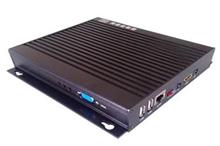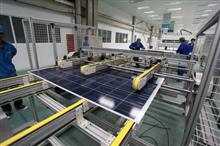
Assume of a photo voltaic cost controller to be a regulator. It provides energy through the PV array to technique hundreds as well as battery financial institution. Once the battery financial institution is almost entire, the controller will taper from the charging latest to keep up the demanded voltage to completely demand the battery and retain it topped off. By having the ability to control the voltage, the solar controller guards the battery. The main element phrase is “protects.” Batteries can be the costliest component of a method, in addition to a photo voltaic charge controller safeguards them from both of those overcharging and undercharging.
The 2nd job may be tougher to know, but working batteries in the “partial state-of-charge” can shorten their life tremendously. Extended periods by using a partial point out of demand will result in the plates of a lead-acid battery to be sulfated and enormously lower life expectancy, and lithium battery chemistries are similarly prone to long-term undercharging. In truth, running batteries right down to zero can destroy them quickly. Therefore, load management with the connected DC electrical loads is critical. The small voltage disconnect (LVD) switching provided by using a demand controller shields batteries from over-discharging.
Overcharging every type of batteries might cause irreparable hurt. Overcharging lead-acid batteries may perhaps result in extreme gassing which can truly “boil” the h2o away, damaging a battery’s plates by exposing them. Inside a worst-case circumstance, overheating and substantial pressure can cause explosive outcomes upon launch.

In its simple sorts, solar PV is really a incredibly straightforward proposition. Hook a solar panel approximately a DC load and it will run until the sunshine goes down. Hook up solar panels to your grid-tied inverter and, providing the solar is shining, electrical power might be sent to your utility. It??¥s all pretty uncomplicated ?a until finally the solar stops shining.
Where it starts to have much more complex is with vitality storage, to be used when the sunlight isn??¥t shining or when the grid is down. Storing electricity to do helpful get the job done later on demands batteries connected to a photo voltaic PV technique. As soon as a battery is included, a demand controller will become one of many most vital process factors.
Anyone going off-grid or seeking to use a hybrid system which can promote solar-generated electric power in the working day and shop that power to be used at nighttime, for the duration of an outage or throughout peak situations will require a photo voltaic cost controller.
Photo voltaic cost controllers needs to be intended to have a beating, because they deal with loads of heat and also have to manage it appropriately. Little cost controllers hold the gain of currently being fanless ?a they get rid of warmth by easy passive cooling.

The development of the Internet of Things (IoT) has quickly increased the demand for thin and wearable electronic devices. For example, IoT depends on communication between devices, which requires antennas that have so far required expensive gold and silver-based metal composites.
To date, existing techniques for the preparation of copper nanoparticles have not been ideal as they resulted in impurities attaching to the material. Since these impurities could only be removed via extremely high temperatures, copper nanoparticles that were created at room temperature were impure and thus could not solidify into usable parts. Until now, this has been one of the hurdles to creating a more cost-effective alternative to gold and silver parts in electronic devices.
The joint study between researchers at Tohoku University and Mitsui Mining & Smelting Co., Ltd in Tokyo reports the successful synthesis of copper nanoparticles with the ability of solidifying at much lower temperatures while remaining pure. The team has altered the structure of the copper nanoparticles and rendered them more stable so that they do not degrade at low temperatures.
"Copper has been an attractive alternative material in the preparation of electric circuits. The most important part of using copper is altering it so that it solidifies at low temperatures. So far, that has been difficult because copper readily interacts with the moisture in the air and degrades, which turns into unstable nanoparticles. With the methods used in this study that alter the structure of the carbon and thereby making it more stable, we have successfully overcome this instability issue," adds Kiyoshi Kanie, Ph.D., associate professor at the Institute of Multidisciplinary Research for Advanced Materials of Tohoku University.
The researchers hope to expand the application of their copper-based nanoparticles beyond just electronics. They believe that this material will be useful in other sectors as well. "Our method effectively created copper nanoparticle-based materials that can be utilized in various types of on-demand flexible and wearable devices that can be fabricated easily via printing processes at a very low cost."
 |
アウディ R8スパイダー 奥迪 R8スパイダーに乗っています。 |